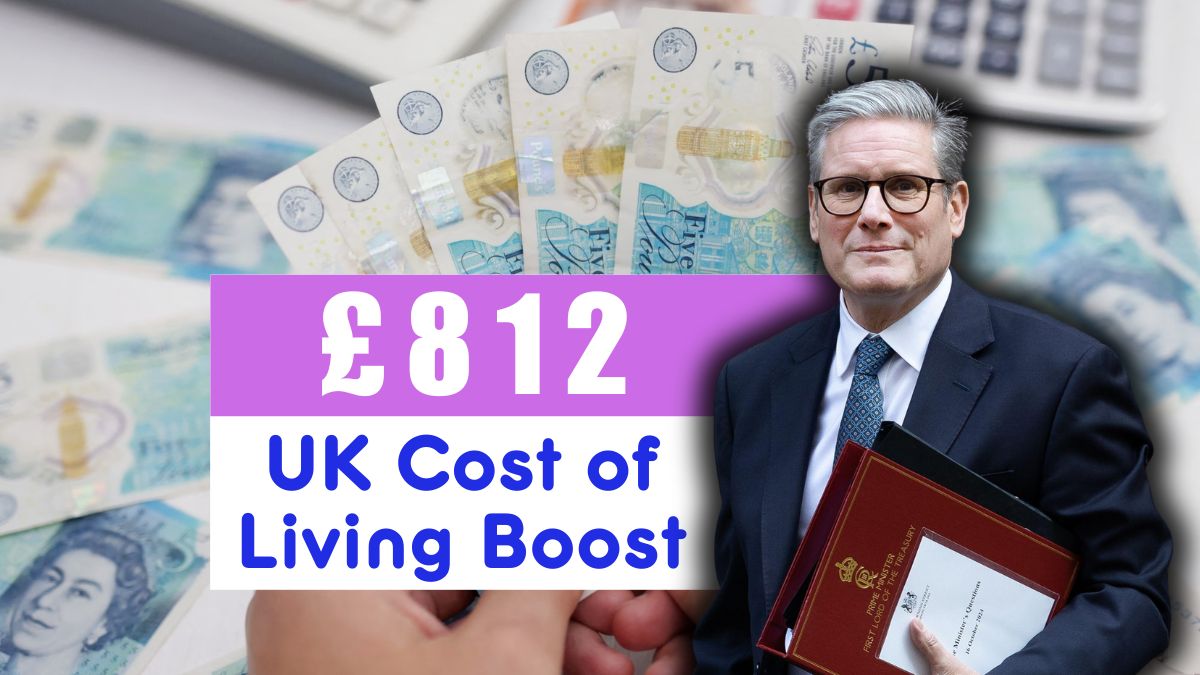The debate over UK income tax reform has intensified in 2025 following a major public petition calling for the Personal Allowance—the amount of income a person can earn before paying income tax—to rise from £12,570 to £20,000.
The petition, started by campaigner Alan David Frost, has rapidly gained public traction, reflecting widespread frustration over stagnant tax thresholds amid soaring living costs. As of September 1, 2025, the petition had surpassed 281,000 signatures, almost triple the number required to trigger a Parliamentary debate.
Supporters argue that raising the Personal Allowance would deliver real financial relief to working families, pensioners, and low-income earners, while critics warn it could severely impact government revenues and public services.
What Is the Personal Allowance?
The Personal Allowance determines how much income an individual can earn each year before paying tax. Currently, the allowance is £12,570, a figure that has remained frozen since 2021.
Critics say this freeze has led to “fiscal drag”, meaning that as wages and inflation rise, more workers are gradually pulled into paying income tax or into higher tax bands, even if their real purchasing power hasn’t improved.
Comparison: Current vs Proposed Personal Allowance
| Aspect | Current (£12,570) | Proposed (£20,000) |
|---|---|---|
| Tax-Free Income | £12,570 | £20,000 |
| Impact on Pensioners | Many taxed on State Pension | Most pensions tax-free |
| Savings for Middle Earners | Minimal | Up to £1,486 annually |
| Impact on Treasury | Stable | £40–50 billion shortfall |
| Inflation Risk | Low | Potential consumer price rise |
| Public Pressure | Moderate | High – 281,000+ signatures |
| Policy Status | Frozen since 2021 | Awaiting parliamentary debate |
Why Supporters Want the Threshold Raised
Campaigners pushing for the £20,000 allowance say it would rebalance fairness in the tax system and boost disposable income for millions. The proposed reform could:
- Provide immediate relief for low-income earners, allowing them to retain more of their pay.
- Help pensioners, many of whom currently pay tax on their State Pension, to keep more of their income.
- Stimulate economic growth, as households with more disposable income are likely to spend more on goods and services.
- Reduce reliance on government benefits, since families would retain more of their earnings.
Advocates say the reform is not just an economic adjustment but a moral one—ensuring that working people can keep a larger share of what they earn during the ongoing cost-of-living crisis.
Government’s Official Response – September 2025
Despite overwhelming public support, the government has rejected calls to immediately raise the Personal Allowance to £20,000.
In its formal response, officials stated that such a move would:
- Create a £40–£50 billion gap in Treasury finances annually.
- Threaten funding for public services like the NHS, schools, and local councils.
- Complicate fiscal targets tied to the national debt and inflation management.
However, the Treasury did acknowledge that tax thresholds remain under review, suggesting the issue could be reconsidered in future Budget statements or Autumn Reviews.
Who Would Benefit Most from a £20,000 Allowance?
1. Low-Income Workers
Workers earning under £20,000 would no longer pay any income tax, saving hundreds of pounds a year—offering significant relief to those hit hardest by rising living costs.
2. Pensioners
Currently, many retirees find that their State Pension and private pensions push them into the taxable bracket. A £20,000 threshold would make most pensioners tax-free, easing financial strain during retirement.
3. Middle-Income Earners
Individuals earning between £20,000–£35,000 would also benefit, with potential annual tax savings of up to £1,486 depending on their tax bracket and deductions.
How the Current Personal Allowance System Works
The UK’s current tax rules apply the Personal Allowance differently across income levels:
- Earnings below £12,570 – completely tax-free.
- Earnings above £100,000 – the allowance is reduced by £1 for every £2 earned.
- Earnings over £125,140 – no allowance applies.
- Married couples can transfer up to 10% of their allowance through the Marriage Allowance scheme.
- Older taxpayers born before April 6, 1935, may receive an additional Married Couple’s Allowance for extra relief.
These rules mean that while lower-income earners face limited benefits, middle-income taxpayers increasingly shoulder a heavier share.
The Fiscal Challenges of Raising the Threshold
While appealing to households, raising the Personal Allowance to £20,000 poses major fiscal challenges:
- Revenue Shortfall: The Treasury would lose an estimated £40–£50 billion annually, requiring spending cuts or new taxes elsewhere.
- Inflation Risk: Extra disposable income could boost demand, potentially driving prices higher.
- Public Services Impact: Reduced revenue could lead to cuts in essential services such as healthcare and education.
- Policy Trade-offs: To offset losses, the government might consider increasing VAT, National Insurance, or corporate taxes.
Political and Economic Context
The debate comes at a time of economic tension, with high inflation, sluggish growth, and continued pressure on public finances. Analysts say the proposal taps into public anger over “frozen tax bands” that have quietly increased people’s tax burden since 2021 without official rate hikes.
Economists are divided—some argue that the policy would stimulate spending and growth, while others caution it could worsen public debt and drive inflationary pressure in 2026.
What Happens Next in Parliament
The UK Parliament follows a structured process for petitions:
- 10,000 signatures: The government must issue an official response.
- 100,000 signatures: The petition qualifies for a Parliamentary debate.
- 281,000+ signatures: MPs are now required to debate the issue formally in the House of Commons.
While debate ensures political discussion, it does not guarantee a policy change. Still, the sheer volume of signatures suggests that the pressure on the Treasury to act will continue to mount.
Public Reaction and Expert Opinions
Public sentiment remains strongly in favour of the increase. Advocacy groups, pensioner associations, and small business organisations have voiced support, describing the proposal as a “fair and realistic” adjustment to modern economic conditions.
Economists, however, remain cautious. Some warn that if introduced too quickly, the policy could undermine fiscal stability and lead to steeper borrowing or cuts elsewhere.
Meanwhile, think tanks like the Institute for Fiscal Studies (IFS) have proposed gradual adjustments—raising the threshold by smaller increments each year to balance relief and affordability.
How the UK Compares Globally
Compared to other developed economies, the UK’s current Personal Allowance is moderate. Here’s how it stacks up:
- United States: The first $14,600 (approx. £11,600) is tax-free, but there are broader deductions.
- Germany: The tax-free threshold is around €11,600 (approx. £9,900).
- Australia: Offers a tax-free limit of AUD 18,200 (approx. £9,400).
- Proposed UK threshold (£20,000) would make the UK’s system among the most generous in the developed world, especially for middle-income households.
Economic Implications of Raising the Threshold
If implemented, raising the allowance to £20,000 would immediately increase disposable income for millions. However, economists warn that:
- Consumer spending could surge, pushing inflation higher.
- The Bank of England may respond by maintaining higher interest rates, affecting mortgage and loan repayments.
- The Treasury deficit could widen sharply without corresponding revenue adjustments.
Despite these risks, campaigners maintain that economic fairness and social stability outweigh short-term fiscal concerns.
Potential Compromises Being Discussed
Some policymakers are suggesting alternative approaches to balance fairness and fiscal sustainability, including:
- Incremental Increases: Raising the allowance to £14,000 or £15,000 initially, then reviewing further adjustments.
- Targeted Relief: Offering higher thresholds specifically for pensioners or low-income families.
- Regional Pilots: Testing different allowance levels across devolved regions before national rollout.
Such approaches could provide relief without overwhelming the Treasury.
FAQs – UK Personal Allowance Petition 2025
Q1. What is the UK’s current Personal Allowance?
The current Personal Allowance is £12,570, meaning you can earn up to that amount before paying income tax.
Q2. Who started the petition to raise the allowance?
The campaign was initiated by Alan David Frost, aiming to raise the allowance to £20,000 in response to the cost-of-living crisis.
Q3. How many people have signed the petition?
As of September 2025, over 281,000 people have signed, ensuring the proposal qualifies for a Parliamentary debate.
Q4. Why did the government reject the proposal?
The government stated that raising the allowance would create a £40–£50 billion annual funding gap, jeopardising public services.
Q5. Could the proposal still be approved later?
Yes. While it’s been rejected for now, ministers have said the policy could be reviewed in future Budgets or economic updates.

















